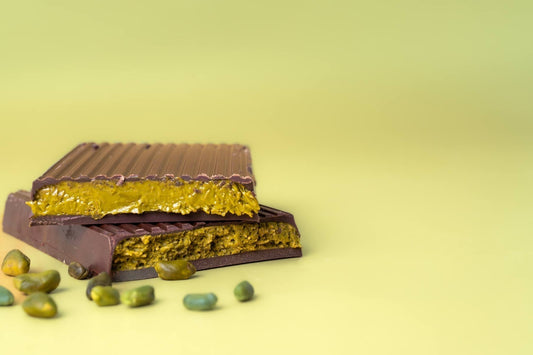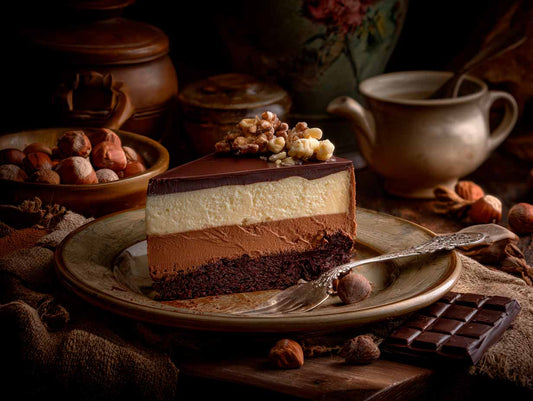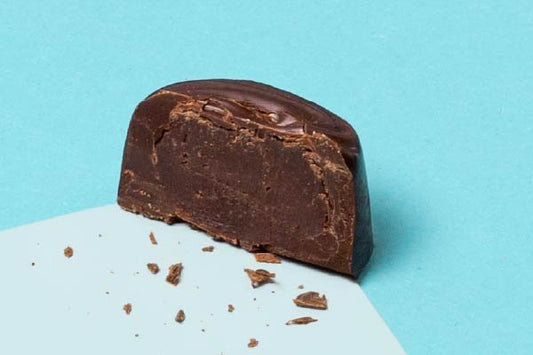How to temper Chocolate
Bombonería PonsTable of Contents
- What is chocolate tempering and why is it important?
- What are the prerequisites for tempering?
- The temperature curve
- Methods for tempering chocolate
- Master the art of tempering
- Frequently asked questions about tempering chocolate
Chocolate Tempering
Chocolate tempering is an essential technique in pastry and artisanal chocolate making. If you want to achieve a shiny finish, a crisp texture, and chocolate that melts perfectly in your mouth, it is crucial to understand this process. At Bombonería Pons, we have been working with chocolate for over six decades, and today we are sharing with you the secrets to doing it like a true chocolate master.
What is chocolate tempering and why is it important?
Tempering is the process of controlling the temperature of chocolate during its melting and cooling to stabilize its crystalline structure. This allows the chocolate to have a silky texture, a glossy shine, and a clean break when it solidifies. Without this step, chocolate may become dull, grainy, or have white streaks.
Tempering is essential for making high-quality chocolates, truffles, and bars. By doing it correctly, you will achieve professional results in your sweet creations.
What are the prerequisites for tempering?
- Quality chocolate: The better the raw material, the better the final result.
- A chocolate thermometer: Measuring temperature accurately is key to the success of the process.
- A spatula and a heat-resistant bowl: These are necessary for handling and mixing the melted chocolate.
- A marble surface (if using the traditional method): Helps cool the chocolate evenly.
The Temperature Curve
Each type of chocolate has a specific temperature curve for tempering:
| Chocolate | Melting | Cooling | Tempering |
|---|---|---|---|
| Dark Chocolate | 45-50 °C | 27-28 °C | 31-32 °C |
| Milk Chocolate | 40-45 °C | 26-27 °C | 29-30 °C |
| White Chocolate | 38-43 °C | 25-26 °C | 27-29 °C |
Methods for Tempering Chocolate
Marble Method
This is the traditional method used in prestigious chocolate shops and patisseries:
- Melt the chocolate to its maximum temperature.
- Pour two-thirds onto a marble countertop and work with a spatula until it reaches the cooling temperature.
- Reincorporate it with the rest of the melted chocolate to temper it and use it immediately.
Seed Method
This is a simpler method, ideal for making at home:
- Melt two-thirds of the chocolate in a double boiler or microwave.
- Incorporate the remaining third in small pieces and mix until dissolved.
- Stir until the temperature drops and reach the correct tempering point.
Microwave Method
For those looking for how to temper chocolate in the microwave, this method is quick and effective:
- Chop the chocolate into small pieces and place it in a microwave-safe bowl.
- Heat in 10-15 second intervals, stirring each time.
- When the chocolate is almost melted, stir until fully dissolved and it reaches the desired temperature.
How to Temper Chocolate Without a Thermometer
If you don’t have a thermometer, you can still learn how to temper chocolate without one using certain tricks:
- Gently melt the chocolate until it appears fully liquid without overheating it.
- Place a small amount on your lips or the inside of your wrist: it should feel slightly cool.
- Check the texture: if the chocolate flows smoothly without being too liquid and does not harden immediately, it is properly tempered.
Master the Art of Tempering
Mastering the art of tempering will allow you to create chocolates with a perfect finish. At Bombonería Pons, we continue this tradition with every truffle and chocolate bar we make, ensuring a unique experience with every bite.
Frequently Asked Questions About Tempering Chocolate
Why doesn't my tempered chocolate shine?
If the chocolate appears dull, it’s possible that the temperature was not correct at some stage of the process. It could also be due to high humidity in the environment or insufficient mixing, which prevents the even distribution of cocoa butter crystals.
What happens if I don't temper the chocolate?
If you use chocolate that hasn't been tempered, it will harden with a sandy or soft texture, have white streaks, and melt easily when touched. Additionally, it will be more fragile and difficult to unmold when making truffles or figures.
Can any type of chocolate be tempered?
Not all chocolates need tempering. Only those that contain cocoa butter require this process, such as dark, milk, or white coverage chocolate. Substitutes using vegetable fat instead of cocoa butter do not require tempering.
How can I avoid burning the chocolate when melting it?
Chocolate is very heat-sensitive and can burn if heated too quickly. To prevent this, melt it in a double boiler without allowing the water to touch the container, or in the microwave with short 10-15 second intervals, stirring constantly.
What should I do if the chocolate hardens while I'm using it?
If the tempered chocolate begins to harden, you can maintain it at its ideal temperature by placing it over a gentle double boiler or using a minimal heat source (such as a warming plate). Do not reheat it too much or it will lose its tempering.




